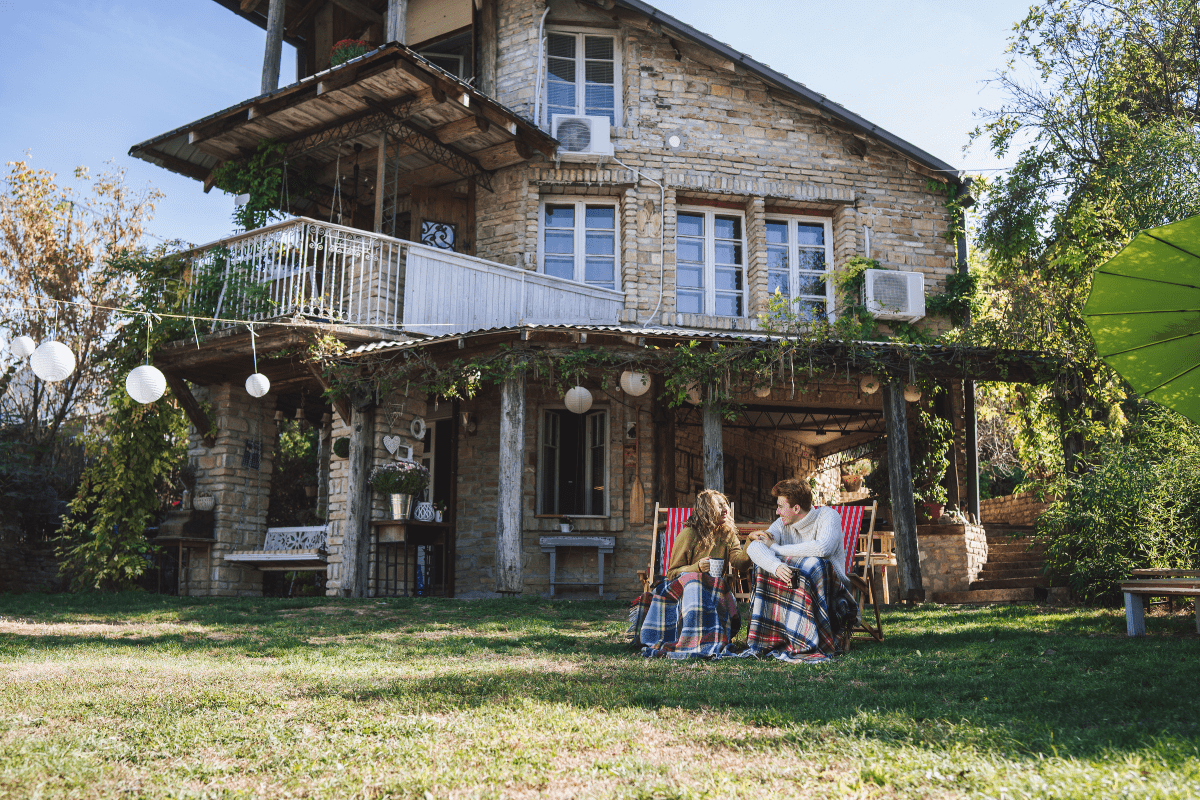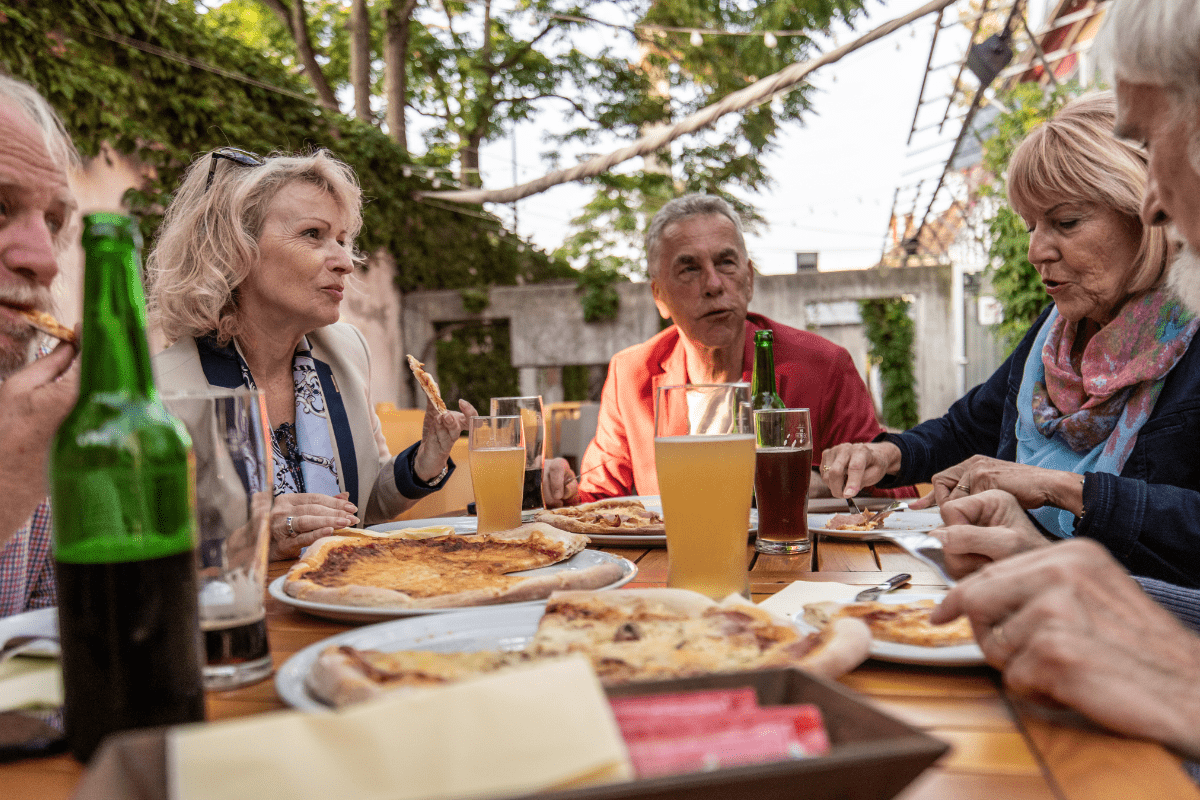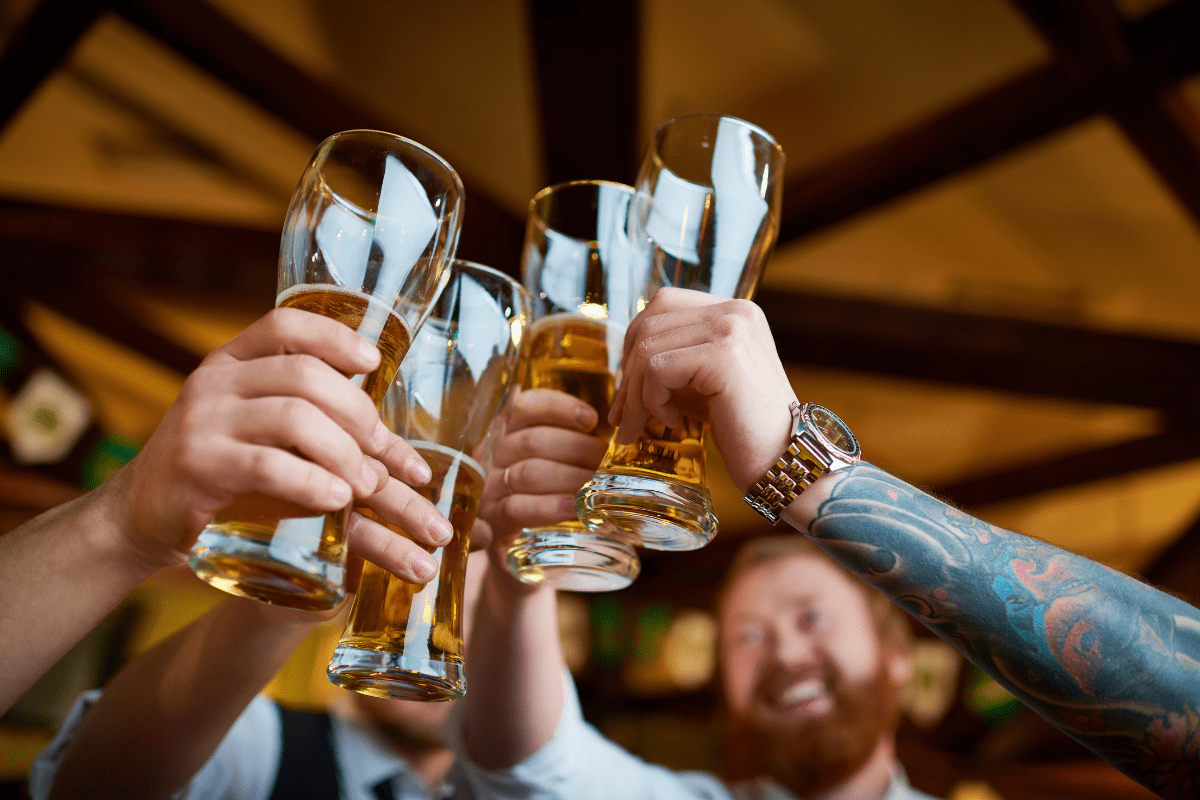Missoula sits in the perfect sweet spot for day trips, surrounded by everything from glacial lakes to ghost towns within a few hours' drive. You can literally wake up, grab coffee, and be standing next to a herd of bison or exploring a Victorian mining town before lunch. Here's the honest truth about seven destinations that deliver maximum adventure with minimum planning required.
The crown jewel: Bitterroot Valley
Just 30 minutes south of Missoula, the Bitterroot Valley feels like driving through Montana's origin story. This isn't just scenic… it's where the whole state basically got started.
Stevensville: Where Montana began
Stevensville holds the distinction of being Montana's first permanent settlement, established in 1841 when Jesuit missionaries set up St. Mary's Mission. The historic mission still stands just two blocks behind Main Street, offering tours that transport you back to territorial days when this was literally the edge of civilization.
What surprised me most about Stevensville was discovering Blacksmith Brewing Company housed in a converted 1908 steam laundry building. They serve solid craft beer with live music on Wednesday and Saturday nights, creating the perfect end to a day of exploring. The juxtaposition of sipping an IPA where people once washed clothes somehow captures the essence of small-town Montana reinvention.
Hamilton: Copper baron extravagance
An hour south brings you to Hamilton, where the Daly Mansion stands as perhaps the most jaw-dropping display of 1890s mining wealth you'll find anywhere. This 24,000-square-foot estate features 25 bedrooms, Italian marble fireplaces, and guided tours that cost $15 for adults. The mansion operates Tuesday through Sunday from mid-June through September, with self-guided tours at 10am and 3pm.
Downtown Hamilton rewards wandering with Nap's Grill, famous for award-winning burgers and portions that could feed a mining crew. If you're looking for something fancier, locals consistently recommend Ember for wood-fired fine dining, though reservations book solid most nights. The Kitchen serves what many consider the valley's best breakfast, operating Wednesday through Sunday from 8am to 2pm.
Bitterroot Valley essentials:
- Free street parking everywhere
- 50-mile paved Bitterroot Trail for cyclists
- Fill up gas in Missoula
- Strong cell service on US-93
- Multiple towns worth exploring
Montana's inland sea: Flathead Lake
The drive north to Flathead Lake takes about 1.25 to 2 hours, but you're rewarded with the largest natural freshwater lake west of the Mississippi. At 28 miles long and 370 feet deep, the crystal-clear waters create an almost Mediterranean atmosphere that feels impossible in Montana.
Polson: Cherry capital and quirky museums
Polson anchors the lake's southern tip with the wonderfully eccentric Miracle of America Museum, where moon rocks share space with vintage cars in a collection that defies categorization. Late June through early July brings cherry season, when roadside stands sell the famous Flathead cherries that locals guard like state secrets.
Betty's Diner serves classic 1950s fare under pink neon signs, with their signature Betty pancakes earning devoted followers. It's the kind of place where regulars have assigned stools and tourists feel immediately welcome.
Bigfork: Art town with serious food
Bigfork earned recognition as one of the "100 Best Small Art Towns in the West," and walking through downtown confirms this isn't tourism marketing fluff. The O'Shaughnessy Cultural Arts Center hosts professional productions in its 362-seat theater, while galleries line streets that actually encourage strolling.
The Raven restaurant offers Caribbean-inspired cuisine with waterfront dining that consistently surprises visitors expecting typical lakeside fare. Locals claim Sakatome serves the best sushi in Montana, which sounds like hyperbole until you try their fresh fish flown in daily.
Flathead Lake activities:
- Swimming at state park beaches ($8 non-residents)
- Boating and fishing rentals
- Wayfarers Unit cliff photography
- Big Arm Unit family beaches
- Cherry picking late June
Water activities dominate the Flathead experience. Flathead Lake State Park maintains four units with swimming beaches and boat launches, charging $8 daily for non-residents while Montana residents enter free. The Wayfarers Unit near Bigfork offers rocky shoreline perfect for dramatic photography, while Big Arm Unit provides sandy beaches ideal for families.
The adventure challenge: Glacier National Park
At 140 miles from Missoula, Glacier National Park pushes the boundaries of day trip territory, requiring a 3-hour drive and early morning start. However, the Going-to-the-Sun Road provides one of America's most spectacular drives, climbing 3,200 feet to Logan Pass at 6,646 feet elevation.
Essential logistics include securing summer vehicle reservations that cost $2 and are mandatory for road access. Park entrance fees run $35 per vehicle for seven days. Arrive before 7am during peak season (July through August) to secure parking at popular trailheads, because this place gets absolutely mobbed during summer.
The Avalanche Lake Trail offers a manageable 5.9-mile round trip hike to crystalline waters surrounded by waterfalls. From Logan Pass, the Hidden Lake Overlook provides 3.0 miles of spectacular alpine views, while the Highline Trail stretches 7.6 miles along the Garden Wall for experienced hikers seeking serious mountain scenery.
Glacier National Park requirements:
- Bear spray mandatory (rentals available)
- Emergency supplies for remote areas
- Offline maps (spotty cell service)
- Layered clothing for weather changes
- Early arrival during summer
Safety becomes crucial given the park's remote location and unpredictable weather. Bear spray is mandatory and available for rent at park entrances. Cell service ranges from spotty to nonexistent, so inform others of your plans and stick to established trails. The nearest major hospital operates in Kalispell, 30 minutes from park entrances.
Guaranteed wildlife: National Bison Range
The CSKT Bison Range sits just 48 miles northeast of Missoula, providing Montana's most reliable wildlife viewing experience. This 18,500-acre preserve maintains 400 to 500 bison alongside elk, deer, pronghorn antelope, and bighorn sheep roaming in carefully managed ecosystem conditions.
Two scenic drives offer different wildlife perspectives. The Red Sleep Mountain Drive covers 19 miles in two-plus hours, climbing to panoramic valley views with the highest concentration of animals. The Prairie Drive provides easier access over 5 miles in about an hour, with virtually guaranteed bison sightings. Both operate as one-way circuits specifically designed for wildlife observation.
Timing significantly enhances your experience. Early morning (8am to 10am) and late afternoon (4pm to 6pm) produce the most active wildlife, while midday summer visits show animals seeking shade. Spring brings adorable newborn calves, and fall features dramatic rutting season activity with bulls establishing dominance.
The visitor center includes comprehensive exhibits on bison conservation, Plains Indian culture, and ecosystem management. Admission costs $20 per vehicle, and federal park passes don't apply since tribal management took over from the U.S. Fish and Wildlife Service. The range operates year-round, though the mountain drive closes during winter months.
Mountain recreation: Seeley Lake
Seeley Lake serves as the gateway to the Bob Marshall Wilderness Complex, offering immediate access to pristine mountain experiences without requiring extensive backcountry commitment. The natural lake provides swimming, fishing, and water activities surrounded by dense forests and towering peaks just 53 miles northeast of Missoula.
The Morrell Falls Trail leads 5.4 miles round trip through old-growth forest to a spectacular 90-foot waterfall that photographs beautifully in any light. Holland Lake Falls combines lake scenery with cascading water features over 3.3 miles round trip. For ambitious hikers, the Glacier Lake Trail connects multiple alpine lakes for true wilderness experiences.
Water activities include swimming from several developed beaches, fishing for multiple trout species, and the Clearwater River Canoe Trail… a gentle 4-mile float perfect for families or anyone seeking relaxation over adrenaline. Rental equipment becomes available in town during summer months, though calling ahead prevents disappointment.
Seasonal considerations affect both access and available activities. Summer (June through September) offers full amenities including boat rentals and established campgrounds. Winter transforms the area into a snowmobiling destination with over 350 miles of groomed trails. Spring and fall provide excellent hiking conditions with minimal crowds and spectacular scenery.
Historic mining charm: Philipsburg
Philipsburg exemplifies Montana's mining heritage with impeccably preserved Victorian architecture that earned designation as one of "America's Prettiest Painted Places." This compact town delivers concentrated history, unique shopping, and authentic Old West atmosphere within easy walking distance, located 75 miles southwest of Missoula.
The Sweet Palace anchors downtown as Montana's largest candy store, occupying a historic building with hand-dipped chocolates, 60 flavors of taffy, and nostalgic confections that make adults feel like kids again. Sapphire mining at nearby Gem Mountain offers genuine treasure hunting where visitors sift through sapphire-bearing gravel with finds ranging from small keepsakes to occasionally valuable gems.
Historic attractions include the Philipsburg Mail newspaper building (operating since 1887), the Granite County Museum showcasing mining artifacts, and numerous Victorian homes displaying period architecture. The compact downtown encourages self-guided walking tours of buildings dating from the 1880s silver boom when this town rivaled Butte for wealth and influence.
Practical considerations include limited winter access when mountain passes close seasonally. The Skalkaho Pass route (MT-38) provides scenic return options during summer but becomes impassable during winter months. Pack lunch from Missoula or try Doe Brothers Restaurant for hearty mining-town fare that hasn't changed much since the 1950s.
Industrial heritage: Butte
Butte deserves recognition as one of the West's most historically significant cities, where copper mining created immense wealth and drew immigrants from around the world to create a unique cultural melting pot. The city's uptown district maintains dozens of historic buildings, underground tunnels, and cultural attractions that tell the compelling story of industrial Montana.
The World Museum of Mining provides comprehensive mining education with underground tours descending 65 or 100 feet into actual mine shafts, with admission ranging from $8.50 to $21 depending on tour depth. The Copper King Mansion showcases the extravagant lifestyle of mining barons with 34 rooms featuring Tiffany stained glass and hand-carved fireplaces for $10 admission.
Cultural attractions include the Mai Wah Museum exploring Chinese immigrant experiences, the Mineral Museum at Montana Tech displaying over 13,000 specimens including a 27.5-ounce gold nugget, and the Berkeley Pit viewing stand overlooking the massive open-pit mine that defined modern Butte.
Dining experiences range from Headframe Spirits (local distillery) to The Freeway (legendary local institution where regulars debate mining history over beer). Historic trolley tours provide comprehensive city overviews, while Spooks & Spirits ghost tours offer entertaining Halloween-season experiences in a city with plenty of supernatural stories.
Planning your perfect Montana day trip
Cost expectations vary by destination and chosen activities. Most destinations offer free or low-cost attractions, with state park fees of $8 for non-residents representing typical expenses. Restaurant meals range from $10 to $20 for casual dining up to $25 to $50 for fine dining experiences. Gas costs approximately $3.25 per gallon statewide, though prices fluctuate seasonally.
Essential preparation checklist:
- Check road conditions before departure
- Download offline maps (spotty cell service)
- Pack emergency supplies for mountains
- Carry bear spray for outdoor activities
- Layer clothing for weather changes
Seasonal timing significantly impacts your experience. Summer (June through August) provides full access and amenities but brings crowds and higher prices. Fall (September through October) offers ideal weather, stunning colors, and fewer visitors. Spring (April through May) presents variable conditions with limited high-elevation access. Winter restricts mountain destinations but opens snow sports opportunities.
Local insights enhance every trip immeasurably. Arrive early to avoid crowds, support local businesses for better service and insider knowledge, and ask locals for current recommendations. Many destinations reward flexibility… if your primary choice seems crowded, locals can suggest equally rewarding alternatives that tourists rarely discover.
The key to successful day trips from Missoula lies in choosing destinations that match your interests and energy levels while remaining flexible enough to embrace unexpected discoveries. Montana's greatest treasures often reveal themselves to travelers willing to venture beyond the obvious, engage with locals, and appreciate the state's remarkable combination of natural beauty and authentic Western character without requiring extensive advance planning or overnight commitments.





